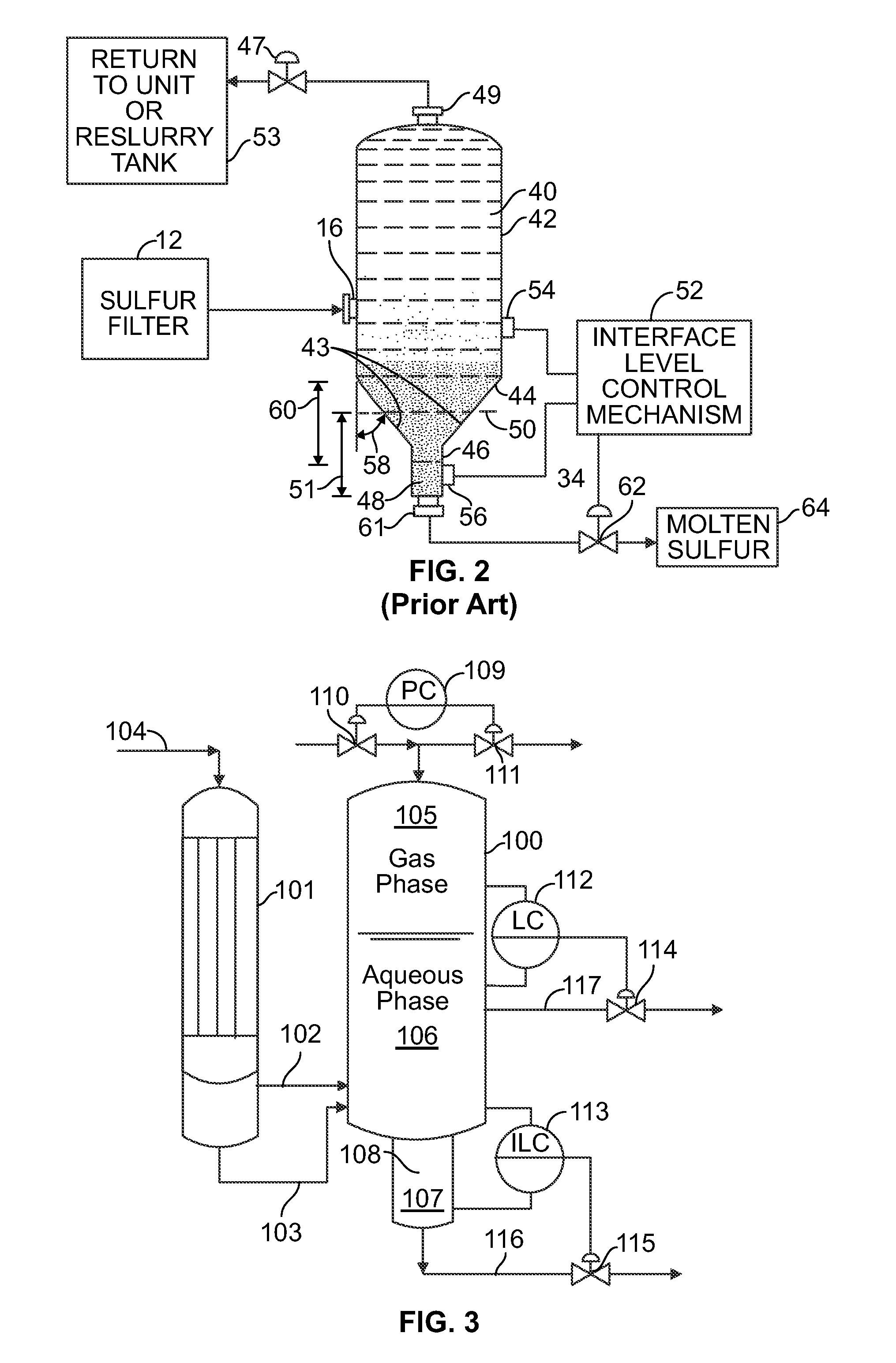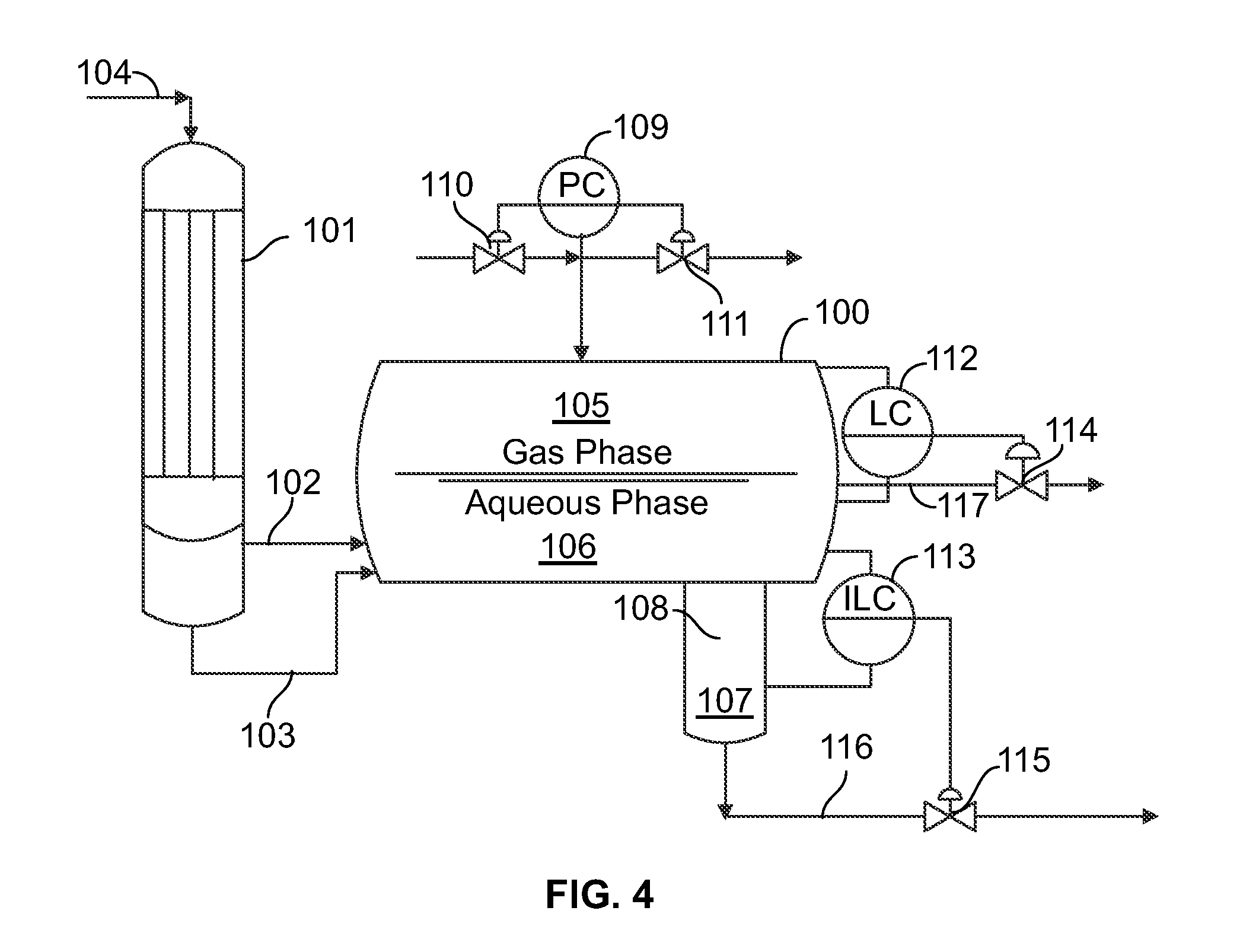Three phase sulfur separation system with interface control
a sulfur separation and interface control technology, applied in the field of separation systems, can solve the problems of deterioration of sulfur quality, undesirable metal polysulfide, fouling of the melter, etc., and achieve the effects of improving the quality of sulfur
- Summary
- Abstract
- Description
- Claims
- Application Information
AI Technical Summary
Benefits of technology
Problems solved by technology
Method used
Image
Examples
Embodiment Construction
[0014]To establish the context of the invention, reference is made to FIGS. 1 and 2, which depict known processes of producing molten sulfur from a liquid redox process. Neither of these known systems use a three fluid phase separator. Sulfur slurry from a liquid redox application, as shown at 2, which includes elemental solid sulfur suspended in redox solution, is passed through a sulfur filter 4. The slurry can be either a relatively concentrated slurry (approximately 15 wt %) as would be produced in a concentrating device, such as a settling vessel, or a relatively dilute slurry (0.1 wt %) as would be encountered if no concentrating device were employed. In the sulfur filtering operation, the majority of the redox solution is removed and returned to the process as filtrate, as shown at 8. The solid sulfur that remains after the filtrate is removed is referred to as sulfur cake or filter cake, and is shown at 5. In some applications, clean water, as shown at 7, is sprayed over the...
PUM
| Property | Measurement | Unit |
|---|---|---|
| diameter | aaaaa | aaaaa |
| interface level | aaaaa | aaaaa |
| residence time | aaaaa | aaaaa |
Abstract
Description
Claims
Application Information
 Login to View More
Login to View More - R&D
- Intellectual Property
- Life Sciences
- Materials
- Tech Scout
- Unparalleled Data Quality
- Higher Quality Content
- 60% Fewer Hallucinations
Browse by: Latest US Patents, China's latest patents, Technical Efficacy Thesaurus, Application Domain, Technology Topic, Popular Technical Reports.
© 2025 PatSnap. All rights reserved.Legal|Privacy policy|Modern Slavery Act Transparency Statement|Sitemap|About US| Contact US: help@patsnap.com



